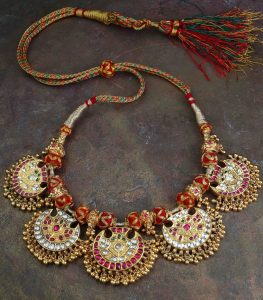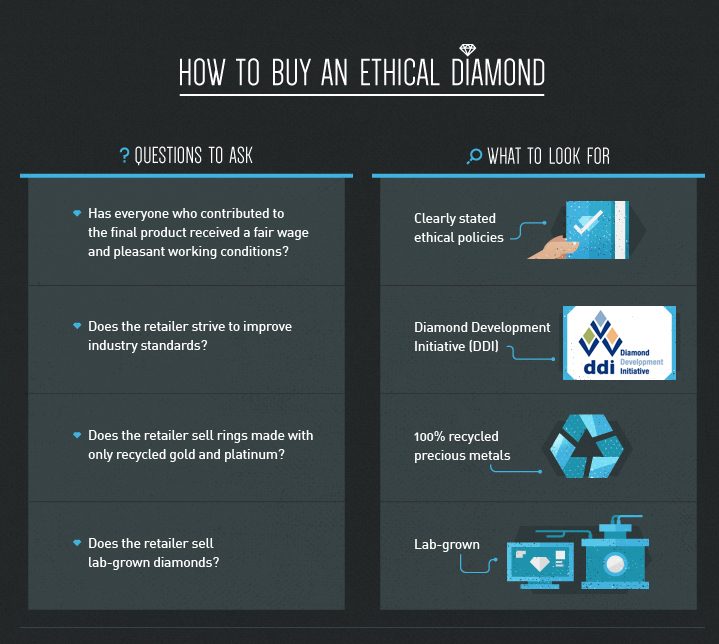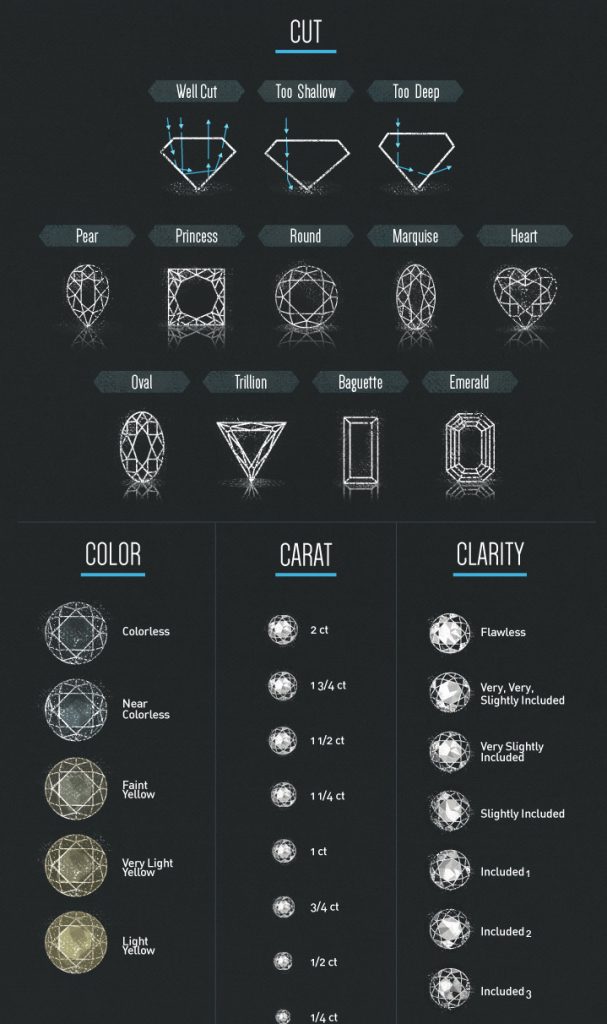View our Diamond Jewellery Collection: Diamond Jewellery | Diamond Earrings | Diamond Rings | Diamond Jhumki | Diamond Pendants
The post 5 Easy Ways to Identify a Real Diamond appeared first on Gehna Blog.
]]>Magnification Test
A natural diamond is imperfect. The irregular shape and supernatural shine of a real diamond will assure you that it has been discovered from a mine and not artificially made in a lab. Use a jeweler’s loupe or a microscope to examine this regal gem. Look for beautiful imperfections, complemented with sharp edges, which make this brilliant rock stand out from the others. A real diamond also has clear-cut facet lines possessing single refractivity. There is nothing natural about a perfectly shaped diamond with rounded edges and scattered facet lines. Additionally, examine the metal on which the starry stone is mounted. A real diamond will always be mounted on pure gold or platinum, and not on gold-plated casting, as a brilliant stone only deserves an equally brilliant metal.
Sandpaper Test
A real diamond is void of scratches and abrasions, giving out a clear-cut brilliant shine as it scatters light falling on its smooth glossy-finished edges. To guarantee the authenticity of a real diamond, scratch it with a rough piece of sandpaper. Since diamonds are one of the hardest stones in the world, the sandpaper test should not leave behind any dainty scratch on the remarkable gem. It should retain its sheer lustre, proving the fact that only a real diamond can cut another real diamond.
Reflection Test
To distinguish a real diamond from a fake one, hold it up against crisp sunlight and observe the way the sun’s rays bounce back from the stone. A real diamond will give out a brilliant grey and white dazzle with a hint of a rainbow sparkle at the edges. On the other hand, a phoney diamond will give out the rainbow hues right from the centre, without a glittering grey shine.
Fog Test
Clean the stone and expose it to a huff of warm air. Since an exquisite diamond is a good conductor of heat, it should typically not possess a layer of steam or fog. If your stone is a dupe, it will resist the heat with a prolonged layer of moisture on it.
Refraction Test
The ultimate test to check the originality of a real diamond is the refraction test. To perform this test, place the stone on a plain sheet of paper and check the image of its shadow. If it creates a dark shadow, like that of an opaque gem, then the stone is not a real diamond. An exquisite diamond gives out an enchanting shine as light scatters through its intricate facet lines and creates a geometrical shadow filled with radiance and sparkle. You will notice a clear-cut dazzling illumination of scattered light, which adds more weight to the fact that the stone in your hand is nothing less than an original.
Furthermore, there is another refraction test to justify the authenticity of this regal stone. Place your stone over a text and check if you can trace the alphabets through the stone. A real diamond will be opaque and will not magnify or contract the text. A duplicate stone, on the other hand, will be more transparent and give out hints of the text underneath.
How many ever tests you perform, it is always advisable to consult a professional gemologist to be completely sure of your diamond’s originality. A real diamond is truly unique, just like its owner. No wonder, this natural masterpiece is also commonly known as a girl’s best friend! Visit Gehna for handmade jewellery, crafted to perfection, for the princess in you.
View Our Diamond Jewellery Collection: Diamond Jewellery | Diamond Earrings | Diamond Rings | Diamond Jhumki | Diamond Pendants
The post 5 Easy Ways to Identify a Real Diamond appeared first on Gehna Blog.
]]>The post 5 Necklace Design You Should Check out This Wedding Season appeared first on Gehna Blog.
]]>The Diamond Necklace
As dignified as the name sounds, this necklace is an ornament which can be passed down through many generations as a family legacy. Hand-crafted as per your preference, this remarkable diamond necklace design stars brilliant cut diamonds in a contemporary indo-western pattern. Modern and elegant in every way, this unique composition gives the illusion of a series of intricate leaf-design motifs, making this necklace legendary enough to mark a statement on its own. Pair this masterpiece with our art deco diamond studs to add more sparkle to your evening.
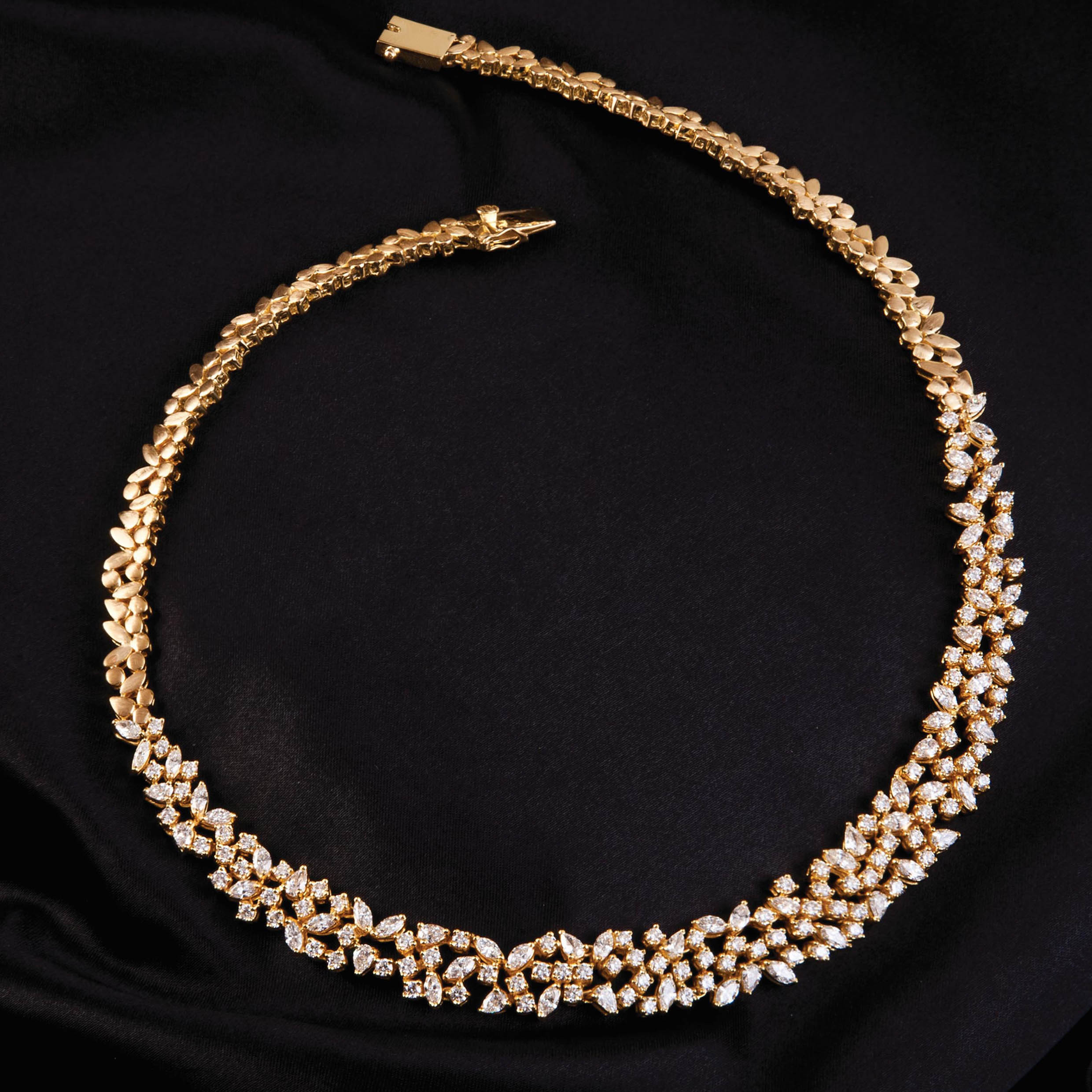
The Bridal Meenakari Necklace
Bring back nostalgic charm this wedding season by flaunting the magnificent Bridal Meenakari Necklace. Its elegantly assembled traditional design is sure to make you look and feel like a retro goddess. This gorgeous 22 karat necklace set is embedded with a distinctive Meenakari design which creates a striking contrast against the delicate drops of gold dangling below. You can also indulge in our alternative design of traditional Meenakari Paisley Necklace set to guarantee all eyes are on you during your big day!
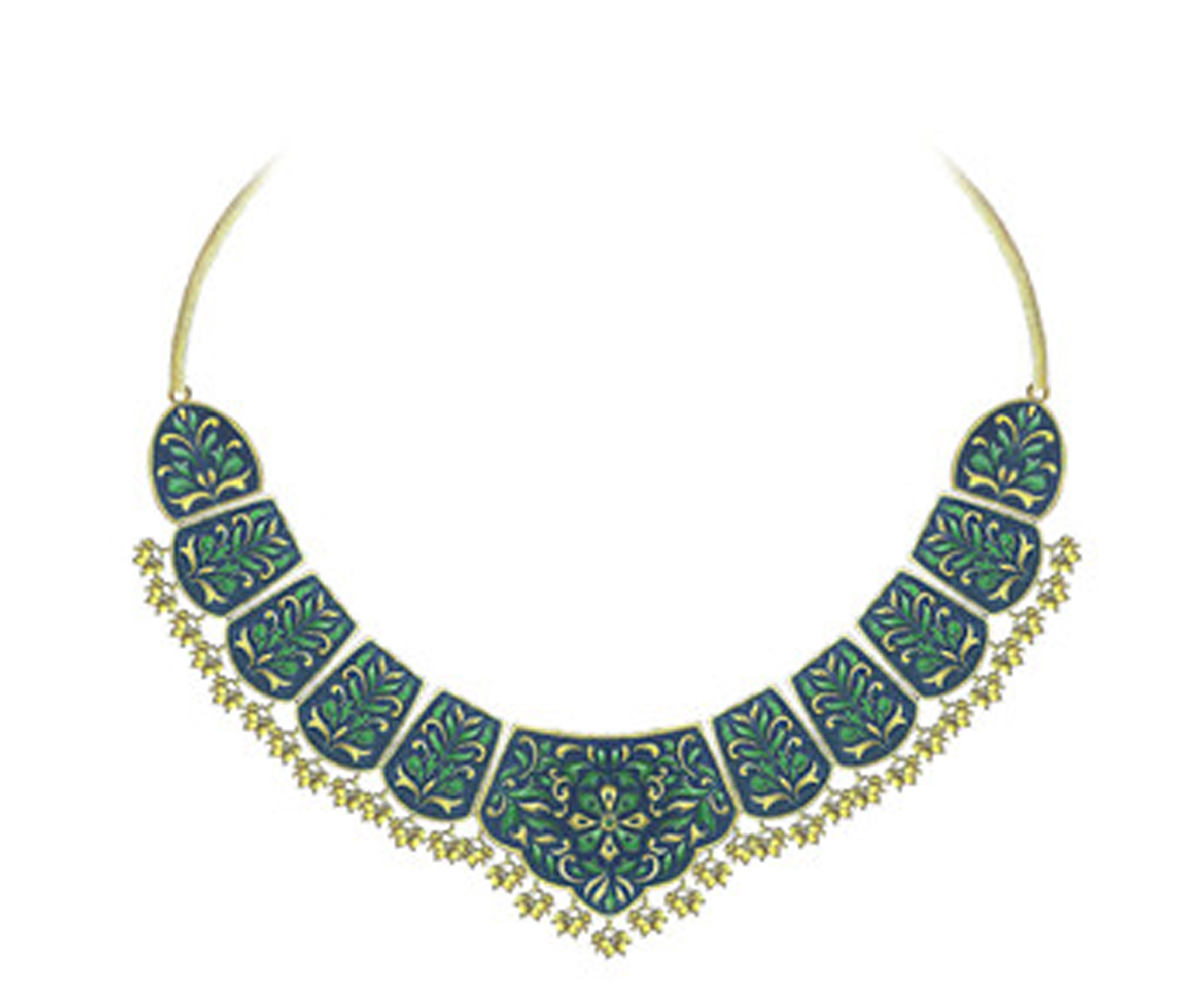
The Traditional Temple Necklace
This quintessential jewellery of a traditional south Indian bride is inspired by the ornaments used to bedeck gods and goddesses during the reign of the Chola dynasty. Be a south Indian enchantress with the intricate traditional motif design of dazzling clear cut diamonds, scintillating rubies and splendid emeralds embedded in pure yellow gold, which keeps you devoted to your conservative roots. The colossal nature of this custom made necklace strikes a stunning contrast on the simple and muted south Indian bridal saree. Pair this spectacular piece with our custom-made traditional temple jumkas and relish the spotlight like a monarchical queen.
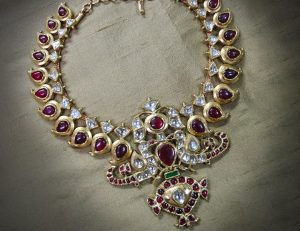
The Vintage Kundan Necklace
This colossal necklace from Gehna’s private collection is a royal masterpiece. The vintage Kundan necklace adds drama and poise to every bride’s jewellery box with intricate uncut diamonds, rubies and emeralds set in traditional and timeless Kundan style. The heavy duty necklace immediately transports you to ancient India giving you the feeling of being a powerful and fearless regal empress.
The Intricate Filigree Necklace
The elegant and elaborate filigree work done on our bridal filigree necklace gives a modern yet timeless look on every bride. The twisted wires of luxurious 22 karat gold intertwined in a perplex maze of contemporary paisley shapes with striking drops of ruby makes the necklace light-weighted and wearable for other occasions too. Pair this stunning piece with sensational filigree gold jhumkis or indulge in our alternative intricate filigree necklace design to be an à la mode bride.
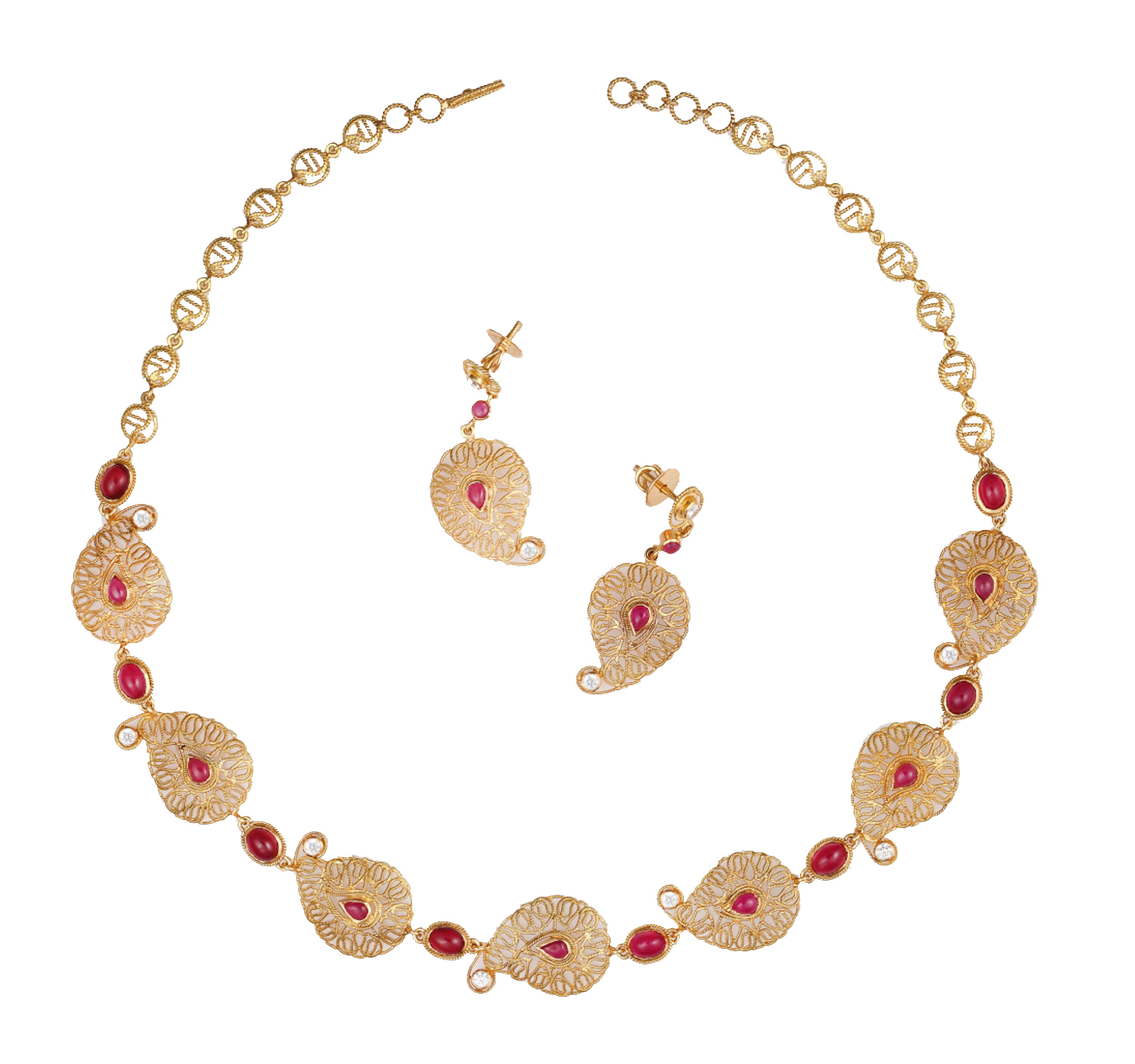
You can go through our handy guide ofpoints to keep in mind while buying jewellery. You can also get inspired from these breathtaking designs and let us custom make your jewellery for you because each bride deserves something exclusive. There are many benefits in choosing handmade products, the most rewarding one being its uniqueness. Customise your jewellery with us and express your attitude with your gems on your wedding day.
View Our Necklace Collection: Necklace | Pearl Necklace | Ruby Necklace | Diamond Necklace
The post 5 Necklace Design You Should Check out This Wedding Season appeared first on Gehna Blog.
]]>The post Diamonds Are Forever appeared first on Gehna Blog.
]]>While for the occasional enthusiast, shopping for solitaires may be a routine affair. But for most it is a rare event such as an engagement or a milestone celebration that brings them on the solitaire quest. Before one begins the pursuit of the perfect solitaire, it is prudent to set oneself a budget, rather than pre-deciding caratage or shape. Once the budget is determined, there are several tips that help in ensuring you get the best for the money you are about to invest. An informed solitaire seeker is a smart buyer. There are several parameters one must consider to make the best choice and we hope we can successfully guide you along your journey to own the perfect solitaire, one that is meant for you.
A guided solitaire tour has to begin with a basic understanding of how solitaires are graded. The standard 4C grading method used for all precious stones makes the process of selecting the perfect solitaire a whole lot simpler than it seems.
Carat refers to the Weight of the solitaire, and not the size, as commonly misunderstood. 1 carat is 1/5 of a gram or 200 miligrams. A carat is further divided into 100 points called cents. For the purpose of standardization, gem sizes have been prescribed for each specific weight and cut.
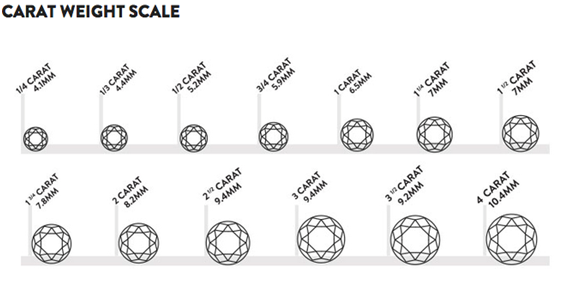
Colour is self explanatory and refers to the hue of diamonds. Being mineral compounds, variations in composition, even the slightest inclusion in the crystallization process can change the colour of the stone. Diamonds are graded on their whiteness starting with D and E grades for absolutely white, going down the alphabet as the stone becomes yellower/browner. When shopping for a diamond, it is recommended that you choose a stone with the least amount of color possible.

While it is recommended that you look for D-F grades of colour, G-H may not be such a bad deal after all, particularly if the price comes down significantly. The neglible yellow tint in the colour of the stone will make little difference to the sparkle of your solitaire.
Cut refers to the specifications that the GIA has standardized based on the shape of the faceted stone. Diamond Cut refers to how well proportioned the diamond is. It is an objective measure of a diamond’s light performance, or, what we generally think of as sparkle. It also refers to how effectively the diamond returns light back to the viewer’s eye.
A well-cut diamond will appear very brilliant and fiery, while a poorly cut diamond can appear dark and lifeless, regardless of its color & clarity. When a diamond is cut with the proper proportions, light is returned out of the top of the diamond (which gemologists refer to as the table). If it is cut too shallow, light leaks out of the bottom; too deep and it escapes out of the side. Most diamonds are cut round with 58 facets, and a good cut, or make, has more scintillation, more sparkle. A perfectly cut diamond would have its size maximized for its weight and its sparkle intensified by increasing its refraction.
If there is one aspect that is not open to compromise, it is the cut of the diamond. Ensure that your GIA certificate grades the cut of your solitaire, irrespective of shape, as excellent. This is what is primarily responsible for the sparkle of your diamond and has been standardized for each shape by experts after years of study.
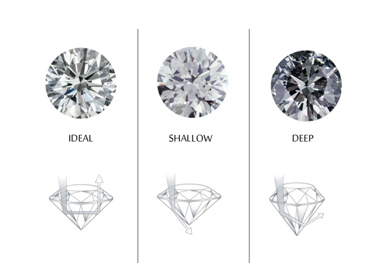
Clarity refers to the extent to which inclusions are absent in the finished gem. Naturally occurring gems can have any number of inclusions in the form of crystallized dust, other minerals, air or water bubbles, and fissures. These interfere with the luminosity of the gemstone. Diamonds are graded as being IF (internally flawless, where the diamond has absolutely no inclusions even when examined under 1000 times magnification), VVS1 and VVS2 (very very slightly included, where inclusions are minor and visible only under 1000 times magnifcation), VS1 and VS2 (very slightly included, where the inclusions are more in number, but again not visible to the naked eye), SI (slightly included, where some imperfections may be visible and the number exceeds any of the previous grades) and I (included, where the imperfections are clearly visible, even to the naked eye). Internationally, any grade down to VVS is considered excellent for a solitaire.

Now that we have given you a quick recap of how a diamond is graded, here are some broad considerations to weigh before you make your spectacular choice.
Shape Matters…
Apart from these standardized measures of a diamond’s quality, one must always consider the shape of the solitaire that they desire. While the round brilliant is the most popular shape for its intense sparkle, other shapes should not be dismissed too easily. On an engagement ring for someone with slender fingers, a marquise, or a pear cut diamond may look prettier than the traditional princess cut or round brilliant cut solitaires. Certain diamond shapes can give you a larger appearance with more or less the same sparkle as the round brilliant cut. So, if size appearance is paramount, then opting for a marquise, pear, or oval shape may get you a visibly larger diamond than a round brilliant of the same weight. If sparkle is not of primary concern, one can explore the subtler shapes such as princess and emerald shapes. Fancy shapes may also add to the general uniqueness of a piece of jewellery. Ensure that you explore as many shape options as you can before you make your final choice.
Pricing Concerns…
Diamond rates are controlled by an agency named Rappaport that sets the ceiling price of diamonds by weight. The price per carat of diamonds increases proportionately as diamond weight increases. Two 0.1ct diamonds will be far cheaper than one single 0.2ct diamond. This increase in price becomes even steeper at significant weights, more often than not at multiples of 10 or 5. So a diamond that weighs 0.97ct will be easier on your pocket than one that weighs 1ct. However, for this significant difference in price, the difference in actual diamond size will be so negligible, that it is imperceptible.
To Heckle or Not…
Jewellers are also allowed to use their discretion (along with Rappaport guidelines) to set their own prices for the diamonds, depending on their overhead costs and profit margins. This explains why solitaire prices may differ from jeweler to jeweler, and also why those with smaller establishments can afford to sell their solitaires for less. All jewelers permit you to examine solitaires under 10x magnifications, and if you can certify for yourself that the diamond you are about to purchase meets all your specifications, you may even be allowed to heckle a bit over the pricing.
GIA Certified?
A certified diamond will cost you a fair bit more than one that is of identical grade, but comes without a GIA certificate. The certification process costs a premium over and above the actual cost of the solitaire. Once again, if you can, evaluate and ascertain for yourself that your diamond is of the grade that you would like it to be, opting for a solitaire without GIA certification may be far easier on your purse strings.
At Gehna, we only use flawless and ethically mined diamonds of the best colour and cut in our jewellery. However, if you would like to ascertain the quality of your precious sparkler for yourself, join us for a cup of tea and may be a quick guide to choosing the perfect solitaire. If you are enthused enough, maybe we can tempt you with a detailed workshop that will equip you with the knowledge you need for years to come. Honour us with the opportunity to create the most magical engagement ring for your special one, or craft those solitaire studs that you wish to splurge on and then pass on as an heirloom for generations to come.
The post Diamonds Are Forever appeared first on Gehna Blog.
]]>The post What a Gem – Know Your Diamonds Before You Buy! appeared first on Gehna Blog.
]]>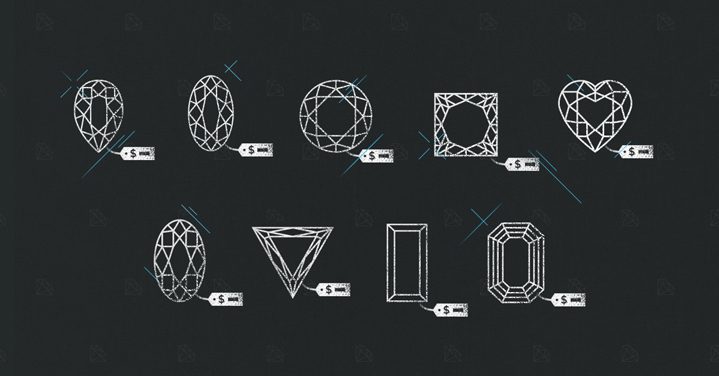
Pick An Environmentally Friendly Engagement Ring
Dig for a diamond that gives back with this guide to the world’s most ecologically responsible gems.
It’s the moment you’ve always dreamed of—time to buy an engagement ring. It’s a sparkling, beautiful piece of jewelry that symbolizes the depth of your love and commitment. And for many couples tying the knot, diamonds are a popular choice. They’re resilient, they come in many sizes and colors, and they look good with just about any metal band. Unfortunately, diamonds aren’t a girl’s best friend, unless they are sourced from a reputable trader. To help you out when the time comes, we’ve put together a handy guide to ethical diamonds that are not only conflict-free, but actually contribute to a cleaner environment and a healthier, wealthier society. We also provide tools to navigate size, color, and cuts in order to create the custom engagement ring that most resonates with you. But first, what is a diamond and where does it come from?
Diamonds’ Deep Origins
Diamonds extracted from the earth have been “growing” for up to 3.3 billion years. Let that sink in for a second. Diamonds crystallize as far as 118 miles deep in the earth’s mantle. Technically speaking, they are transparent crystals of tetrahedrally bonded carbon that form as a result of high temperatures and pressure. After deep volcanic eruptions that cool, the diamonds surface as igneous rocks such as kimberlites. Kimberlites are long pipes full of diamonds, and while they used to be ubiquitous, the nongovernment organization Diamond Development Initiative (DDI) notes it has been a good 10 years since new kimberlites have been found. More easily accessible kimberlites are unlikely to be found anytime soon because of the difficulty and expense associated with prospecting. While industry leaders are slightly more optimistic, nobody questions that diamonds are increasingly difficult to source and supply is dropping as demand soars.
The Big Hole: History of the Diamond
The first kimberlite pipes were discovered in the Northern Cape province of South Africa in the late 1800s. By 1872, 50,000 miners had converged in Kimberley to manually dig what is known as The Big Hole, which is 1,519 feet wide and 790 feet deep. Many people died in pursuit of the next big diamond because of hazardous working conditions, so several mining companies merged as De Beers Consolidated Mines Limited to clean up the business. A century-long, global monopoly subsequently ensued with virtually zero oversight. Twenty five countries now have substantial diamond mining operations. And for many, it’s a curse.
Beyond Conflict-free
The film Blood Diamond helped expose the world to the dirty business that is diamond trading. More than 3 million people have been killed in African countries including the Democratic Republic of Congo, Sierra Leone, and Angola as a result of civil wars fought over what we now call conflict diamonds. Eventually, the horrific stories of women and children enduring unspeakable atrocities became very embarrassing for the diamond industry, so it developed a certification standard called the Kimberley Process (KP) in a halfhearted effort to root out violence. Even though the majority of diamonds traded on the market today are certifiably conflict-free, few environmentalists or social activists take KP seriously anymore and several of its key founders pulled out due to reports of corruption, nonexistent regulation, and an effort for powerful interests like De Beers to maintain their monopoly. If a diamond trader’s best claim is that they meet KP standards, it may be best to keep looking. For conscious consumers, a conflict-free diamond simply isn’t good enough.
The Mining Process
Most modern mines use earthmoving equipment to dig massive open pits, though De Beers also mines diamonds from the Atlantic Ocean’s seabed off the coast of Namibia. There’s financial incentive to minimize disturbance in order to avoid having too much waste material to sift through, but it’s still a destructive practice that requires a good deal of water and energy, produces emissions and waste, and disrupts biodiversity. Some sellers say the best diamonds are those sourced from Canada, since they have stringent environmental and social standards. But this isn’t completely true. The Canadian Arctic Resources Committee found irreversible environmental damage has occurred at and beyond mining sites such as Ekati mine in the Northwest Territories. Water quality has changed for the worse, lakes have been drained (destroying fish habitat), and grazing wildlife like caribou are beginning to look for their food elsewhere because of serious land degradation. Even though Canada does more than most countries to ensure diamond mining has a low environmental impact, work still needs to be done. Also, if someone tells you their diamonds were mined to ISO 14 001 environmental standards developed by the non-profit International Organization for Standardization, be wary: This is a voluntary initiative with a loose regulatory framework like KP. Sixty-five percent of the world’s diamonds come from Africa—and conflict diamonds have been reduced from approximately four percent to one percent of the market since KP was implemented in 2003—but it still takes some digging to find ethical gems. As you conduct your search, the trick is to know what you’re looking for.
Ethical Diamonds: What to Consider Before You Buy
Fair industry standards
When sourcing your ring, look for a retailer that supports development organizations like DDI, which strives to improve industry standards and provide training programs for artisanal miners, while also working towards establishing a Fair Trade certification system to link responsible artisanal diamond mining businesses with conscientious consumers.
Fair working conditions
When buying your ring, sure everyone who has contributed to the end product—prospectors, miners, polishers—receives a fair wage for their work and enjoys pleasant working conditions. Most ethical sellers will alert you to their standards right away in order to distinguish themselves from big-box sellers.
Lab-grown
If you love the glimmer of a diamond but it’s not as important that it has been mined, consider a lab-grown diamond. Unlike simulant diamonds, lab-grown diamonds are real diamonds with the exact same molecular and physical properties as a diamond extracted from the Earth, but they are grown in a lab. They may well be the most environmentally friendly diamond you can purchase, though they won’t always come with the same kind of job opportunities for local communities as a larger artisanal mining operation.
Recycled band
In addition to worrying about where your diamonds come from, it’s important to be conscientious about the origin of the band as well. In fact, 20 tons of ore and waste rock are required to produce one standard gold band. Look for a retailer who sells rings made with only recycled gold and platinum, which will drastically reduce the ring’s footprint.
The supplier
Many people go straight to their local mall when looking for an engagement ring, but we recommend shopping around. There are plenty of boutique jewelers and online craft markets with a solid reputation for sourcing ethical diamonds, preferably from an artisanal mine or lab-grown and paired with a fair-trade or recycled metal band. No diamond on the market is 100 percent sustainable, but some are certainly better than others.
The 4 Cs
In order to help diamond consumers gauge the scale and quality of diamonds, the Gemological Institute of America developed the 4Cs of diamond quality: color, clarity, cut, and carat. Diamonds with no color are the most chemically pure, and therefore most superior. Clarity refers to how many inclusions or blemishes diamonds have as a result of being battered around by a lot of heat and pressure. When evaluating a diamond’s clarity, a jeweler looks for the number, size, and nature of these blemishes to determine how they affect the stone’s overall appearance. The fewer dings the better. Cuts, on the other hand, come in many variations. Round and princess cuts are said to be most popular because they reflect light so well (and that’s the holy grail of diamonds) but there are 10 popular shapes and hundreds more that are proprietary. Carat of course refers to size. One metric carat is 200 milligrams. GIA has several interactive charts that analyze different colors and sizes, so you will be armed with all the necessary tools before purchasing the ring of a lifetime.
This article was originally published by custommade.com Click here for the article http://goo.gl/XiEJRz
If you’re interested in customising jewellery or purchasing diamonds, get in touch with us at 044-28363602 or [email protected]
View our Diamond Jewellery Collection: Diamond Jewellery | Diamond Earrings | Diamond Rings | Diamond Jhumki | Diamond Pendants
The post What a Gem – Know Your Diamonds Before You Buy! appeared first on Gehna Blog.
]]>